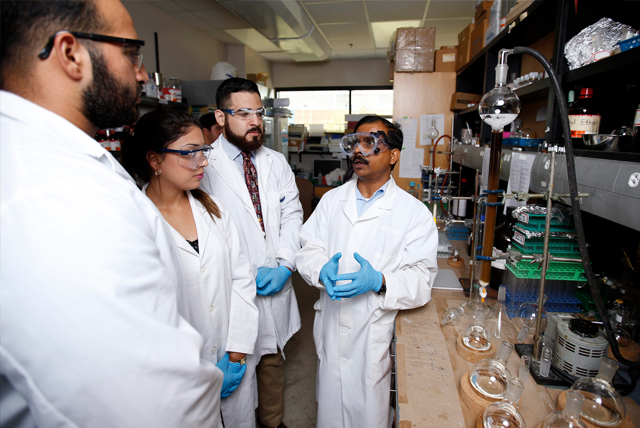Fabrication of poly(caprolactone) nanofibers containing hydroxyapatite nanoparticles and their mineralization in a simulated body fluid
Document Type
Article
Publication Date
3-4-2011
Abstract
In the present study, we introduce poly(caprolactone) (PCL) nanofibers that contain hydroxyapatite (HAp) nanoparticles (NPs) as a result of an electrospinning process. A simple method that does not depend on additional foreign chemicals has been employed to synthesize HAp NPs through calcination of bovine bones. Typically, a colloidal gel consisting of PCL/HAp has been electrospun to form nanofibers. Physiochemical aspects of prepared nanofibers were characterized for FE-SEM, TEM, XRD and FTIR which confirmed nanofibers were well-oriented and had good dispersion of HAp NPs. Parameters affecting the utilization of the prepared nanofibers in various nano-biotechnological fields have been studied; for instance, the bioactivity of the produced nanofiber mats was investigated while incubated with stimulated body fluid (SBF). The results from incubation of nanofibers in SBF indicate that incorporation of HAp strongly activates precipitation of the apatite-like materials because the HAp NPs act as seeds that accelerate crystallization of the biological HAp from the utilized SBF.
Recommended Citation
Kanjwal, M.A., Sheikh, F.A., Nirmala, R. et al. Fabrication of poly(caprolactone) nanofibers containing hydroxyapatite nanoparticles and their mineralization in a simulated body fluid. Fibers Polym 12, 50–56 (2011). https://doi.org/10.1007/s12221-011-0050-3
Publication Title
Fibers Polym
DOI
10.1007/s12221-011-0050-3



Comments
Copyright © 2011, The Korean Fiber Society and Springer Netherlands
https://rdcu.be/c4Jge